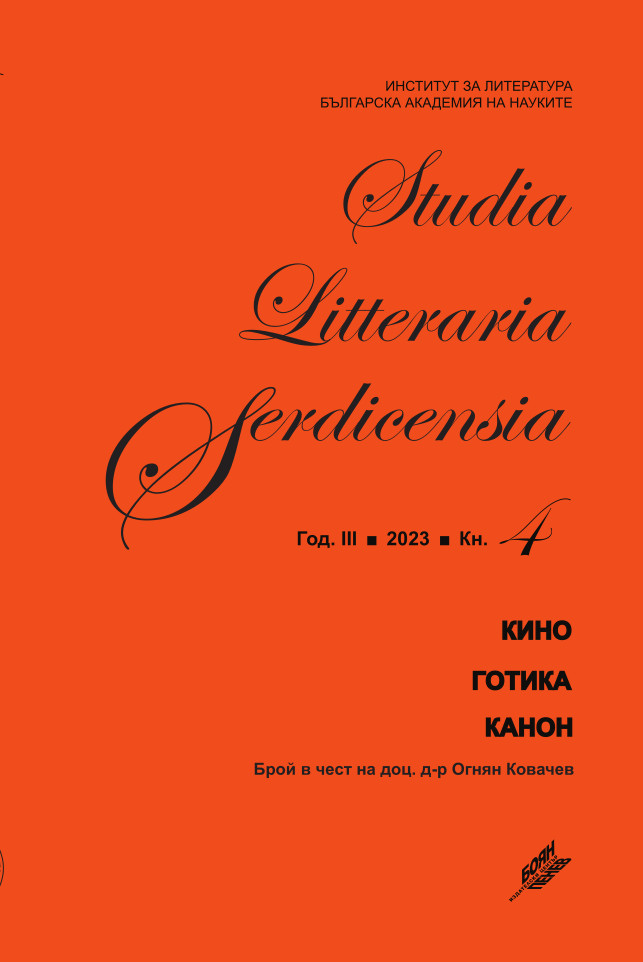FOREWORD
-
ABSTRACT
През 2021 г. доц. д-р Огнян Ковачев чества своя шестдесети рожден ден. Във връзка с това Катедрата по теория на литературата към СУ
„Св. Климент Охридски“ организира двудневен форум на 26–27 ноември 2021 г. в негова чест под наслов „Кино, канон, готика“ с фокус върху теоретичните и литературноисторическите му интереси през годините.
Кино, готика, канон не са само три събирателни точки. Те са цели изследователки траектории, около които Огнян Ковачев не просто фокусира научните си интереси, а прокарва като нови пътища в българското литературознание. Отделните тематични ядра на настоящия брой бележат ярките акценти от работата на О. Ковачев, които продължават да бъдат разработвани от самия него и от редица други изследователи. Такива са научните проблеми на адаптацията и репрезентацията, каноничното и извънканоничното в литературата и киното, готическото и възвишеното, алтернативни канони и алтерации на канона, световната литература.
Тези търсения са включени в настоящия брой на „Studia Litteraria Serdicensia“. Редакторите му изразяват сърдечна признателност към Института за литература при БАН и най-вече към проф. Пламен Антов, главен редактор на изданието, за поканата това начинание да се разгърне на страниците на изданието, както и за търпението, грижата към детайла и професионалната работа по целия път – от идеята до реализацията. Тези съвместни усилия Ви дават възможност като читатели да се срещнете с литературоведския свят на О. Ковачев, видян през погледа на авторите от следващите страници.
SUBJECT


